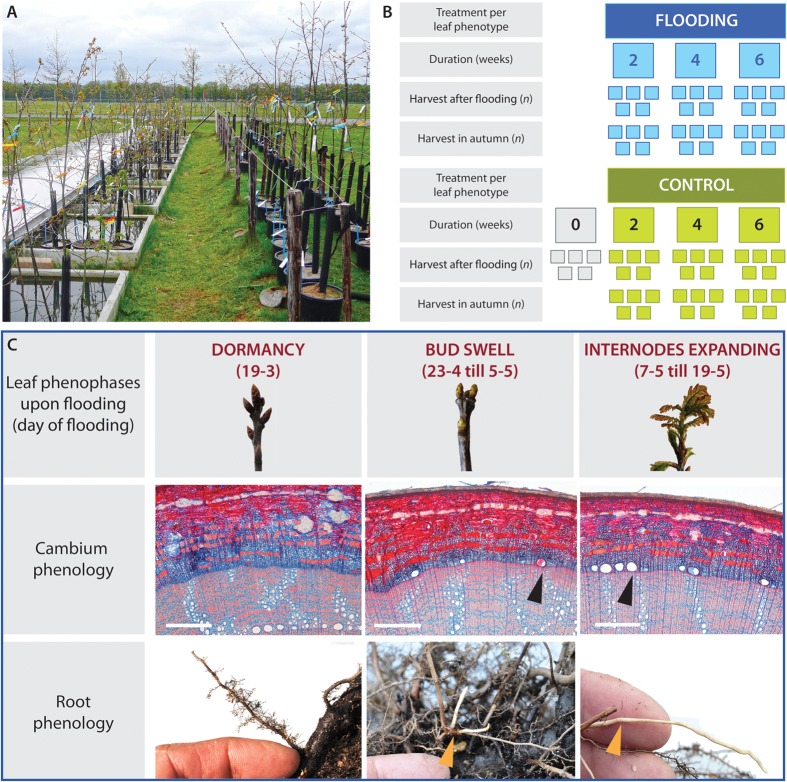FIGURE 1.
Experimental set-up of the flooding experiment. (A) Experimental set-up showing the concrete basins with experimentally flooded trees on the left and corresponding control trees on the right. (B) At three leaf phenophases, trees were flooded to a stem height of 50 cm for 2, 4, or 6 weeks (n = 10); control trees were placed next to treated trees. Upon budswell, an additional group of trees had only their roots flooded during 2, 4, or 6 weeks (n = 10). After the flooding period in spring, five trees per treatment were harvested immediately while the remaining trees were returned to the experimental garden to be harvested after the end of the growing season, in autumn. (C) Cambium and root phenophases in relation to the three leaf phenophases upon the onset of flooding. When the buds were dormant on March 19th, 2010, the cambium and roots were dormant as well with no earlywood vessels or white roots present. Upon budswell, between April 23rd and May 5th, earlywood-vessel development had started irregularly around the circumference. Normally, earlywood vessels were unlignified while in some cases lignification had started (arrow). In all trees, newly formed elongating white roots were present (arrow). When the internodes started expanding 14 days after budswell, between May 7th and May 19th, earlywood-vessel development had started in all trees and both lignified (arrow) and unlignified vessels were present and many new elongating white roots had formed.

